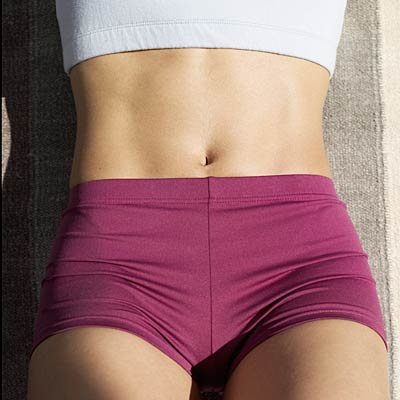According to ACE commissioned study, on what is the best, most efficient route to tighter abs? The Biomechanics Lab at San Diego State University revealed a unique look at 13 of the most common abdominal exercises, ranking them best to worst.
The researchers recruited 30 healthy women and men to participate in the study. The subjects, ages 20 to 45, ranged from occasional exercisers to those who work out daily. Participants were put through a battery of exercises that target the midsection, including the traditional.
After extensive data collection and analysis, Dr. Francis ,Ph.D head of the study and his researchers found that exercises that require constant abdominal stabilization, as well as body rotation, generated the most muscle activity in the obliques.
Topping the list of the most effective exercises was the bicycle maneuver, followed closely by the second ranked, captain’s chair. As for home exercise equipment, crunches on an exercise ball ranked highest—coming in third overall.
Although crunches on the ball generated less activity in the obliques and rectus abdominus than the top two exercises, the exercise also generated significantly less activity in the rectus femoris—making it, arguably, the best overall exercise of the lot. Not all of the variations of the crunch fared so well . Both the long arm crunch and the crunch with heel push were shown to be only slightly more effective than the traditional crunch. As for the equipment ACE provided, the Torso Track appeared to be marginally more effective than the traditional crunch. However, this training benefit is likely offset by the lower-back discomfort reported by a significant number of subjects while using the Torso Track. The Ab Roller was proven to be virtually no more effective than the traditional crunch while the AB Rocker was shown to be up to 80 percent less effective.
Top 5 Ab Exercises
-
-
Captain’s Chair: Stabilize your upper body by gripping the hand holds and lightly pressing your lower back against the back pad. The starting position begins with you holding your body up with legs dangling below. Now slowly lift your knees in toward your chest. The motion should be controlled and deliberate as you bring the knees up and return them back to the starting position.
-
-
Vertical Leg Crunch: Lie flat on the floor with your lower back pressed to the ground. Put your hands behind your head for support. Extend your legs straight up in the air, crossed at the ankles with a slight bend in the knee. Contract your abdominal muscles by lifting your torso toward your knees. Make sure to keep your chin off your chest
with each contraction. Exhale as you contract upward; inhale as you return to the starting position.
-
No matter which exercises you choose, take the time to train and strengthen your abdominal muscles. Strong abs help with good posture, alleviate lower back pain and are essential for long-term health and well being.
For more: http://www.acefitness.org/

